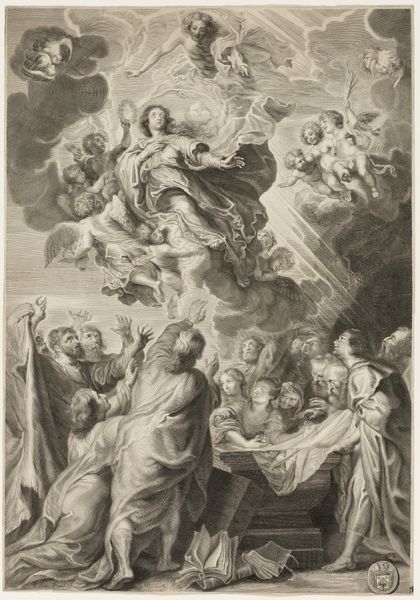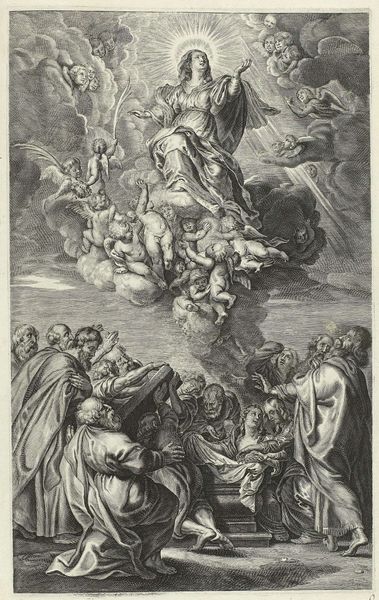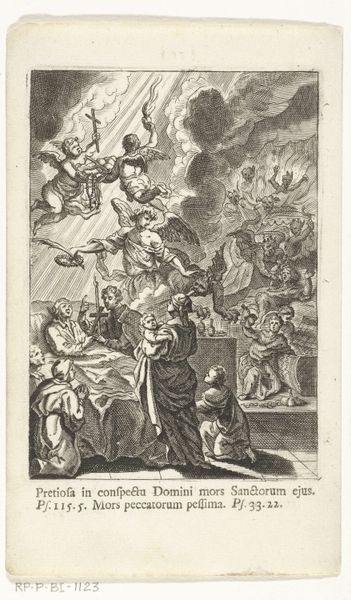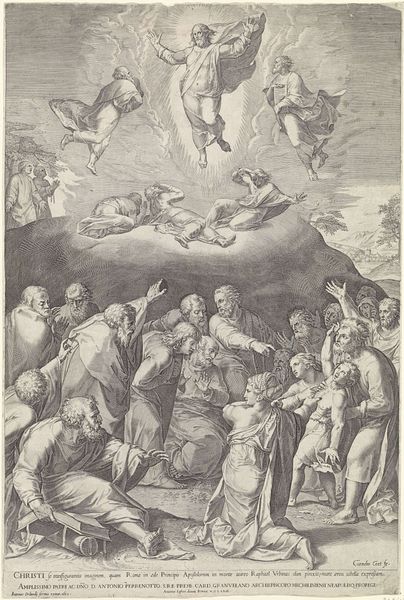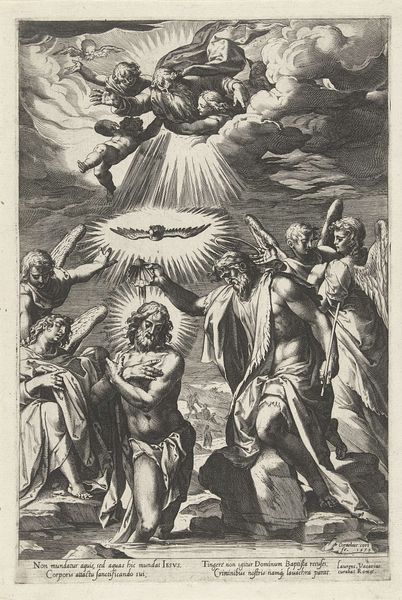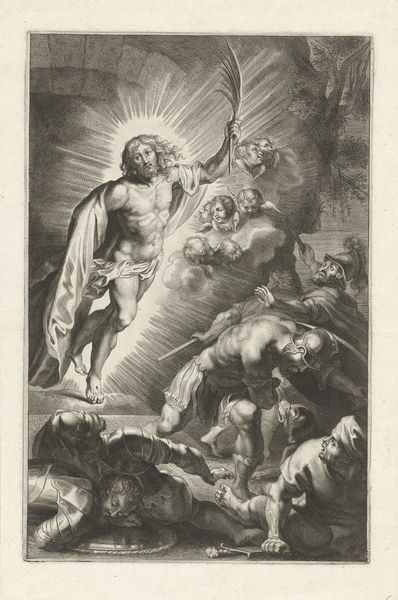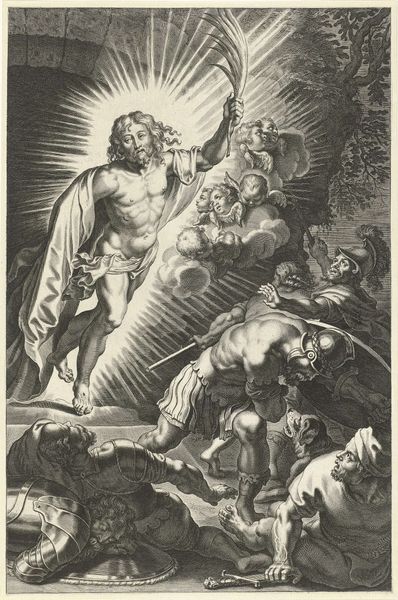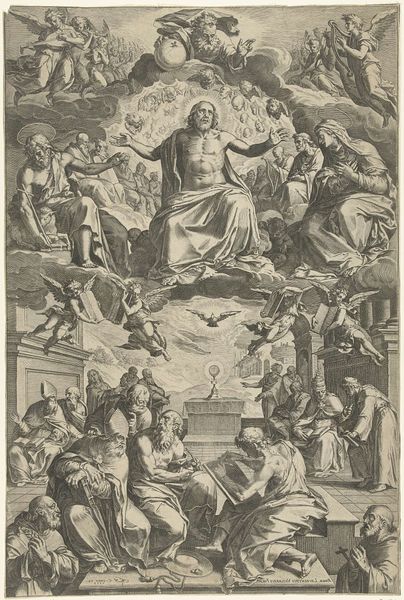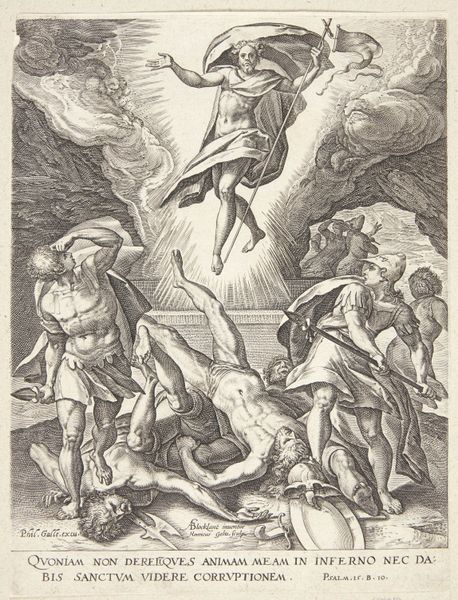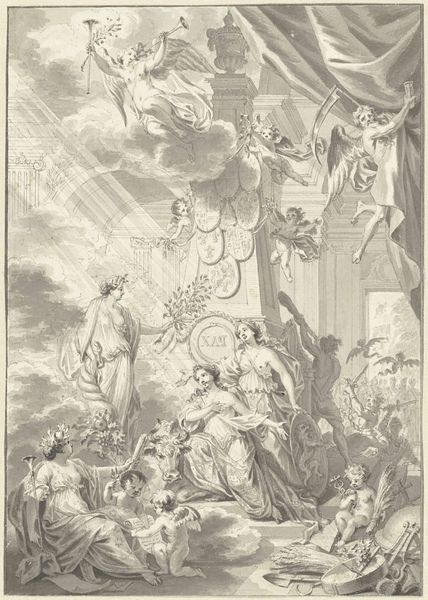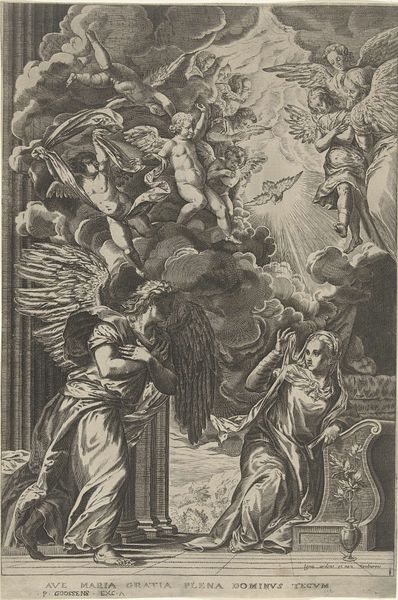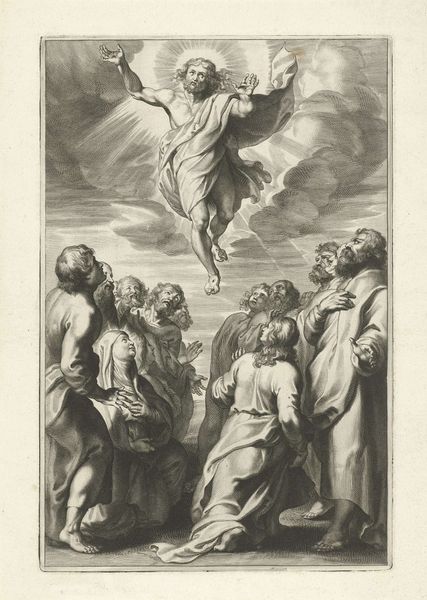
engraving
#
baroque
#
figuration
#
history-painting
#
engraving
#
christ
Dimensions: height 477 mm, width 355 mm
Copyright: Rijks Museum: Open Domain
Editor: This is Cornelis Bloemaert’s "Opstanding van Christus," or "Resurrection of Christ," created sometime between 1633 and 1692. It's an engraving held at the Rijksmuseum. The first thing that strikes me is how dramatic it is; the scene feels both heavenly and chaotic at the same time. What do you see in this piece? Curator: Oh, drama, darling, is Bloemaert's bread and butter, isn't it? For me, this isn't just a depiction of resurrection, it's about transformation, about light conquering darkness, about the sheer, unbelievable *power* of belief. See how Christ rises, radiant, almost impossibly bright? But below, the guards are flung every which way, utterly undone. Editor: Yes, the contrast is so stark! I hadn't really focused on the guards. Curator: Precisely! Bloemaert captures that raw, immediate shock. What happens to your carefully constructed reality when something miraculous smashes right through it? It’s like a stage play, each figure caught in their specific moment of disbelief and wonder... or terror. And notice how even the clouds seem to swirl around him, reacting to his energy, a visual echo of that powerful force. Have you seen anything similar to this portrayal? Editor: I see what you mean about the dramatic contrast! Now I’m curious to go back and look at other baroque religious art to see how other artists interpreted this theme. Curator: Indeed, and consider how an engraving, with all its painstaking lines, is a form of resurrection itself. The artist painstakingly recreates a scene, bringing it back to life for a new audience, again and again. Isn't that a divine kind of repetition?
Comments
No comments
Be the first to comment and join the conversation on the ultimate creative platform.
